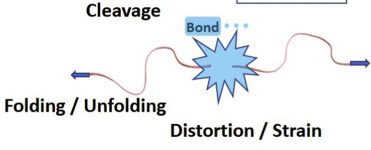Materialien für die “Ewigkeit”: selbstheilende Polymere – auch rezyklierbar!
Marinow, A., et. al. Chemie in unserer Zeit, ASAP, 2021, ciuz.202100014R1
Wie man die Lebensdauer von Materialien verlängern kann hat die Menschheit nicht erst im 21. Jahrhundert beschäftigt. So hat der Begriff „Verlängerung der Nutzungsdauer eines Materials“ zusätzlich Bedeutung vor allem im Bereich der Konsumprodukte erhalten, nicht zuletzt über den Wunsch der Vermeidung von Müll und von emittierten Kohlenstoffdioxid. Die Nutzung von reversiblen chemischen Bindungen erlaubt es Polymermaterialien mit selbstheilenden Eigenschaften herzustellen, aber auch neue Konzepte der Rezyklierung/ Wiederverwendung von Polymeren zu ermöglichen – damit kann die Nutzungsdauer von Batterien, Solarzellen, Mobiltelefonen oder Gummireifen verlängert werden.











